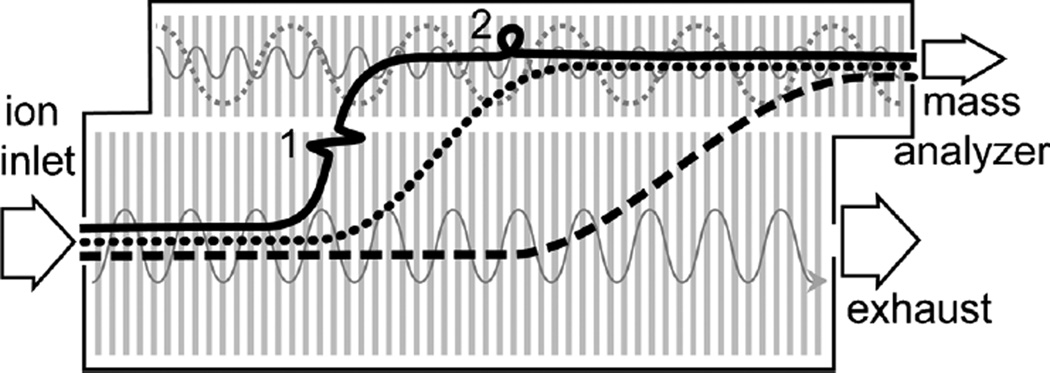Figure 4.
Cartoon of suspected origin of deuterium loss in the StepWave ion guide on the Synapt G2-Si mass spectrometer. Based on the results of this study, the following hypotheses emerge. Under standard conditions (black solid lines) certain ions can: 1) gain enough energy from the rapid transfer between the lower and upper stages to induce inter-molecular proton exchange with the residual bulk water; 2) “roll-over” the traveling wave (gray solid line) in the upper stage of the ion guide to induce inter-molecular proton exchange. When run with a lower DC offset voltage (black dashed line) the ions transfer from the lower to the upper stage under milder conditions resulting in reduced deuterium loss, at the cost of signal intensity due to the loss in transfer efficiency. By using a moderate DC offset voltage (black dotted line) along with larger wave height and slower traveling wave velocity in the upper stage (gray dotted line) both transfer and roll-over induced deuterium loss are vastly reduced, with minimal loss in overall signal intensity

